C.S.M. Arthur Earl Collie
Authors: Alan Collie & Johan Van Duyse
Remembrance, Messines Ridge British Cemetry
Saturday, June, 6th, 2009.
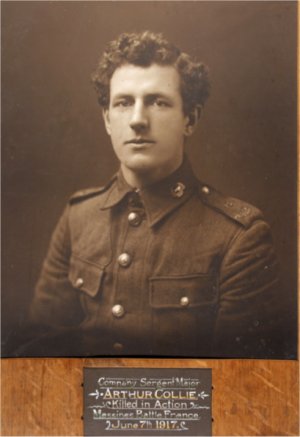
Arthur Earl Collie - His Life Story.
'I located the wonderful cover photo of Arthur at Dunedin's Early Settlers Association. It had been donated but due to NZ privacy laws I have been unable to locate the donor. My apoligies for the incorrect photo label but in 1917 Messines and Europe were a long way away'
'Our Collies came from Morayshire with a strong Scottish bloodline, travelled to County Clare and Limerick Ireland 1837, then Melbourne, Australia 1856, Invercargill New Zealand 1883 where Arthur and others were born and onto Dunedin 1899 where myself and other Collies were born....'
Alan Collie 2009
Our story starts in 1856 when William COLLIE (born 1805) and Catherine FRASER with seven children depart from Ireland to the Emigration Centre at Plymouth, England bound for Victoria, Australia. One of the children was William COLLIE aged 10 b 1849 County Limerick, Ireland. He is the father of our soldier.
In 1857 the Collie family arrives in Belfast (now Pt. Fairy), Victoria, Australia on the ship WILLIAM. The Passenger List of the WILLIAM shows the Collies with a 'destination of Melbourne'.
In 1871 William, at age 22, started work as a bookbinder in Melbourne with George Robertson and Co. This Company sold second hand books and later became a Publisher.
In 1879 the same William COLLIE, now aged 31, bookbinder of Abbotsford Street and Catherine RYAN, age 21, Lady, of Frantylin Street, Hotham marry in Melbourne and on the 25th of January 1880
Robert William COLLIE is born in Melbourne.
A year later Catherine RYAN drowns (age 23) on Brighton Beach Melbourne after being separated from William COLLIE for 10 months. Her body was found at the high tide mark, fully clothed with no sign of abuse. Catherine was born a Roman Catholic and was 5 ½ months pregnant to William Collie when they married. William was Church of England. Son Robert William Collie was 1 ¾ years old when Catherine drowned. In 1881 the railway line terminated at Brighton Beach….
Perhaps Catherine took a train ride to Brighton and due to the marriage separation, family and religious pressures and postnatal issues pushed her to take her own life.
In 1883 William Collie resigns from George Robertson and Co and sails to New Zealand where he was employed again as a bookbinder with Erskine and Whitmore in Invercargill.
In 1885
William COLLIE aged 36, marries
Lucy Ann CLARKE from New Plymouth, Taranaki in Invercargill.
First son Robert sails to Invercargill in 1886.
Father William

Mother Lucy
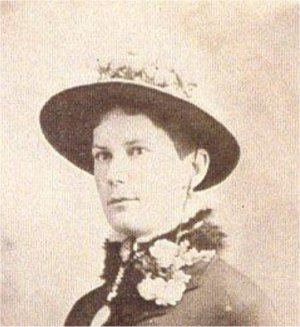
Together they have 5 children ... with William's eldest son Robert, born Melbourne, living with them.
- Lottie Ethel May Collie born 8/7/1887 Invercargill, died Melbourne
- William Ernest Collie born 2/7/1891 Mary Street, East Invercargill, died Dunedin
- Arthur Earl Collie born 30/1/1893 Gala Street Invercargill, killed Messines.
- Marthy Ivy Collie born 29/4/1895 Don Street Invercargill, died Martin, NZ
- Olive Lucy Collie born 15/2/1897 Don Street Invercargill, died Mosgiel, Dunedin.
In 1893 William Collie becomes the Licensee of the Park View Hotel, Gala St, Invercargill, the first of five hotels he will be operating during his life. The Park View Hotel was in the Invercargill North area.
Park View Hotel Invercargill c1894
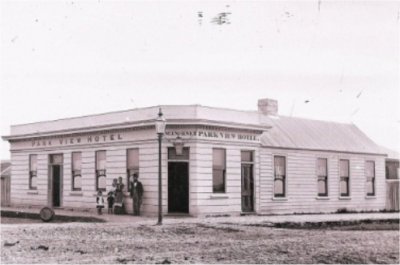
The same year
Arthur Earl COLLIE, our soldier was born, and one year later, his father William COLLIE moves to another hotel: the Criterion Hotel, Don St Invercargill. The Collie family upstairs at the Hotel and Martha and Olive Collie were born there too.
Criterion Hotel Invercargill 1896
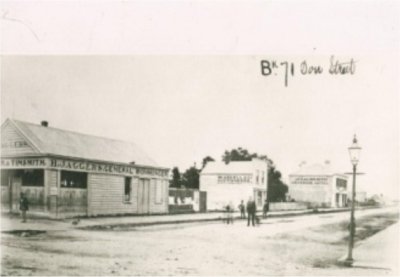
Criterion Hotel Invercargill 2009
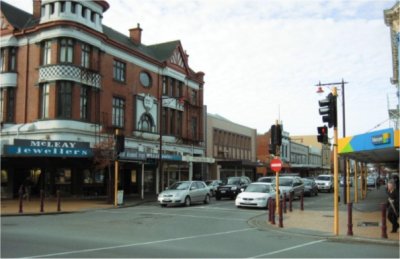
In 1897 or 1898 the COLLIE family moved from Invercargill to Dunedin and on the 26th of February we can read an advertisement in the Tuapeka Times.
'CENTRAL HOTEL, three minutes walk from Railway Station, Princess St Dunedin, W Collie. Late of the Criterion, Invercargill, has taken the above centrally situated hosteiry and will be always pleased to see his old friends when they are paying a visit to Dunedin. Excellent Accommodation for Boarders and travelling Public. Hot and Cold Baths. Two
excellent Billard Tables.'
Central Hotel Dunedin 1901
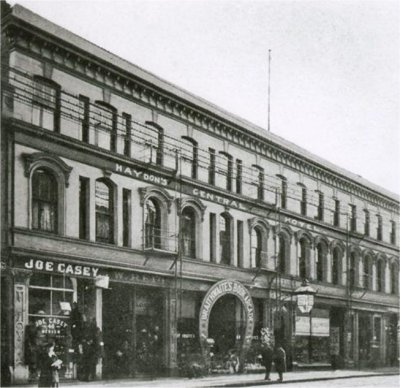
Central_Hotel Building Dunedin 2009
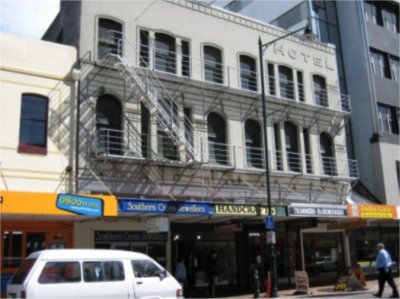
In 1900 we can find the family in the Southern Hotel, Princess St, Dunedin. Again Arthur's father William is the Licensee.
Southern Hotel 1903
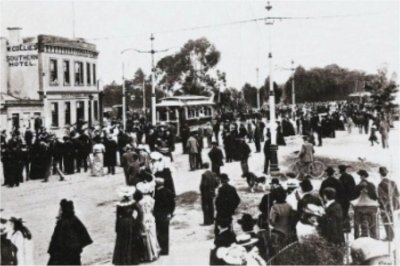
Southern Hotel 2009
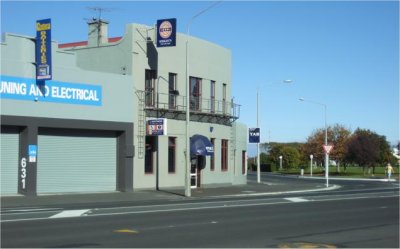
From 1903 photo we see the official opening on the city's new electric tram service. It so happened that the opening was right outside William Collie's Southern Hotel and quite a crowd had gathered for the opening. Note the horse and carts, the gas street lights and the long dresses the ladies wore and the people leaning out of the top floor windows of the Hotel. Of course the entire Collie family lived on the top floor of the Hotel in 1903, Arthur included aged 10. Perhaps Arthur is one of those looking out?
And again in 1903.. The Auction of the Captain Cook Hotel in Dunedin, a brick building with 12 rooms and a bar. William Collie purchased this hotel at this auction and again the family lived upstairs.
Captain Cook Hotel c1900
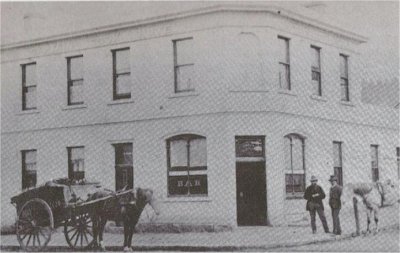
Captain Cook Hotel 2006
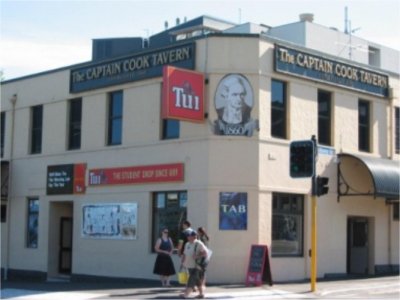
In 1905 Williams eldest son Robert W COLIIE marries Euphiemia Muirhead in Dunedin. His grandchild is our Alan.
Our Arthur Earl also goes to school
Arthur went to two Primary Schools in Dunedin; Kensington and St.Clair, between 1899 and 1907 and then onto...........
Dunedin's Boys High School

This picture is taken 1908/09 in the winter....(the school later had a name change to Otago Boys High School). Arthur went to this school 1908 to 1910. Dunedin is surrounded by high hills and has a great harbour!! The school still stands at the same place now and the Memorial Gate with Arthur's name in bronze are now to the extreme right of the school buildings, which is the main entrance to the school.....
Arthur was a very good cricket and rugby player…
CRICKET TEAM 1908

RUGBY TEAM 1910

The cricket photo came from the school records showing Arthur in the 1st Cricket team 1908 at age 15..
Arthur left Boys High School in 1910 and became an Ironmonger at Patterson and Barr Ltd in Dunedin.
The old Union Rugby Football group photo of Arthur is when he was 17, and when he had left school. He is sitting on the left hand side of the captain (who is holding the ball). 6 years later he died at Messines...
It was common that teams that won a competition, as this 1910 team did, for every player to receive a 'cap'.
Alan says: 'I am lucky to have Arthur's 'cap, given to me by my father Earl, who was given it by his father Robert William who must have got it from Arthur's belongings after he was killed in 1917. Arthur and Robert were very close to each other....... and in 1911 and 1912 Arthur joined the same Rugby Football Club (Zingari Richmond Rugby Football Club) that Robert William Collie was in. Robert later went on to be that clubs President and other notable positions to do with the game on Rugby Football in Dunedin and Otago, which is still New Zealand's national game....
Arthur's 1910 Rugby Cap

Arthur at Zingari RFC 1913
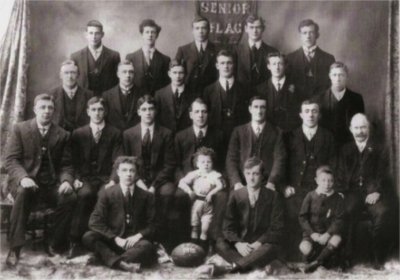
This is a great 1913 photo of him taken a approx. a year before he went to WW1, and 4 years before he was killed. Arthur on the top row, second from the left... Alan: 'Arthur most likely received a 'cap' for his team winning the competition but I do not know where that is. I managed to get the photo on loan off the wall at the Zingari Club a year ago, and had it copied which hangs on the wall of my study here in Auckland.'
Great Britian declares War on Germany in 1914 and Arthur and many other New Zealander young men join the Army for a new overseas 'adventure'...
14/8/14 Arthur was given his Medical Examination in Dunedin, New Zealand.
23/8/14 Attested in Dunedin New Zealand as a Private in the Otago Infantory.
22/9/14 Otago Regiment sailed from Port Chalmers to Wellington.
16/10/14 Sailed from New Zealand with the Main Body on Transport No.5 (S S Ruapehu for Arthur) and arrived Alexandria Egypt 3/12/14
3/12/14 Extensive Military Training was undertaken.
12/4/15 Embarked from Alexandria Egypt for Gallipoli, Dardanelles, Turkey..
11/8/15 Admitted to Casuality Clearing station at Dardanelles.
Private A. Collie,
Otago Infantry
Reported wounded, now in hospital (Otago Witness 27 October 1915) with dysentery.
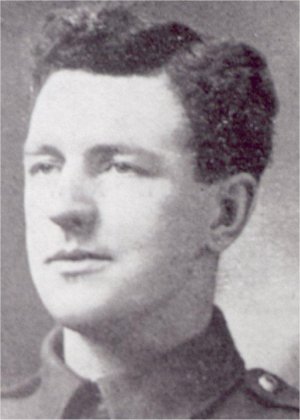
12/8/15 Promoted to Corporal in Dardanelles
15/8/15 Admitted to St Andrews Hospital, Malta from H S Glasgow hospital ship for 6 weeks with Dysentery.
18/9/15 Embarked for England on S S Oxfordshire ship.

25/9/15 Admitted to Alder Hey Special Military Hospital, Liverpool for 18 weeks
31/1/16 Taken to Walton on Thames NZ Military Hospital until 10/2/16
Walton on Thames England Hospital
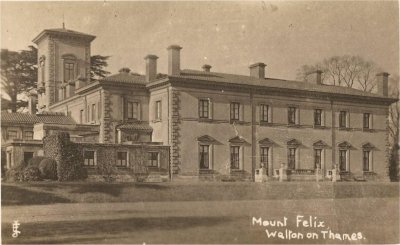
28/2/16 Taken to Hornchurch Camp, England

Grey Towers Hornchurch Hospital England WW1
2/3/16 Transferred to Hornchurch War Hospital
22/3/16 Taken to a Classfied location
30/4/16 Transferred to France or Belgium
25/5/16 Joined 2nd Battalion in the Field and posted to 14th Company.
22/7/16 Sent to Hospital
5/8/16 Rejoined Battalion from Hospital
26/9/16 Promoted to Sergeant (authority from Rouen) Arthur's appointment was awarded to him as a result of a Sergeant Brian Vernon Dillon 8/190 of Dunedin being killed 15/9/16 at the Somme. It is assumed that Arthur fought at the Somme too.
10/1/17 Appointed Tempory Company Sergant Major (as a result of a C.S.M. R.J.Knox being posted)
10/1/17 Promoted Company Sergant Major
10/1/17 Appointed Warrent Officer Class 2
20/3/17 Attached to No.5 New Zealand Light Railway Operating Section
8/4/17 Rejoined Battalion
7/6/17 Killed in Action. (Messines Belgium)
Just before his death at Messines he had been at Instructional Schools in France, and was expecting an early commission.
And then Messines…
Messines, calm and quiet today
 Preparations for Battle (from A.E; Byrne Official History of Otago Regiment in the Great War)
Preparations for Battle (from A.E; Byrne Official History of Otago Regiment in the Great War)
… A brief topographical explanation will assist the reader to visualise the situation and appreciate the task involved. The Messines-Wytschaete Ridge lay almost midway between the towns of Armentieres and Ypres. Situated at the eastern end of a chain of abrupt, isolated hills which divided the valleys of the Rivers Lys and Yser, it linked up with the rising ground which stretched north-east from Wytschaete to the Ypres-Menin Road, and then northwards past Passchendaele to Staden. The village of Messines, situated on the southern spur of the ridge, commanded a wide view of the Lys Valley and enfiladed the British lines to the south. Northwest of Messines was the village of Wytschaete, situated at the point of the salient and on the highest part of the ridge and commanding even more completely the town of Ypres and the whole of the British positions in the Ypres Salient. The Messines Ridge had many great natural advantages, and these the enemy during his long tenure had developed to the utmost. Messines and Wytschaete villages stood as the main centres of resistance, with numerous farm-houses and buildings, outwardly innocent looking shacks, as strong-points of great tactical strength. The German front line skirted the western foot of the ridge in a deep curve; the second line system followed the crest of the ridge and formed an inner curve. The forward defences consisted of an elaborate and intricate system of well-wired trenches and strong-points, forming a defensive belt approximately 2,000 yards in depth. The many farms and woods were well prepared for defence, and the face of the ridge was liberally punctuated with strongly constructed and well concealed machine gun emplacements, with concrete dug-outs designed to protect the garrisons against the effects of our artillery fire. The enemy had fortified these naturally strong positions in a manner calculated by him to form an impregnable barrier to any attack on the part of the Allies…
On June 3rd elaborate orders for the attack and capture of the Messines-Wytschaete Ridge were issued. The operation was entrusted to the Second Army, under the Command of General Sir Herbert Plumer, and the front selected for the attack extended from a point opposite St. Yves to Mount Sorrell inclusive, a distance, following the curve of the salient, of between nine and ten miles. The final objective was the Oosttaverne Line between these two points; and the greatest depth to which the attack was to penetrate represented about two and a-half miles. The frontage allotted to the II. Anzac Corps; which embraced the New Zealand, the 3rd Australian, and the 25th Divisions, extended from St. Yves to the Wulverghem-Wytschaete Road.
The attack of the Corps was divided into two phases, as follows: 1st-The attack and capture of the Black Line, which extended across the forward side of the village of Messines; 2nd-The attack and capture of the Green or Oosttaverne Line. The first phase was to be carried out by troops of three Divisions disposed side by side, namely, the 3rd Australian, the
New Zealand, and the 25th, from right to left. The second phase was to be carried out by the 3rd and 4th Australian Divisions; and to this end the 4th Australian Division was to pass through the New Zealand and 25th Divisions and capture the Green Line opposite the fronts of those Divisions. The New Zealand Division, being in the centre of the Corps front, was thus entrusted with the honour of capturing Messines Village.
In the allotment of tasks within the New Zealand Divisional area, the 2nd Infantry Brigade and the 3rd (Rifle) Brigade were committed to the capture of the first and second German lines on the forward slopes of the ridge and the village of Messines itself. The two Brigades were to attack side by side, the 2nd Brigade on the left and the 3rd Brigade on the right, the Brigade boundary being represented by a straight line drawn from a point in Hanbury Support, along the line of the Gooseberry Farm-Messines Road, and through the centre of the village.
In the subdivision of the 2nd Brigade task the attack was to be carried out with two battalions in front, namely, the 1st Battalion of Otago on the left, and the 1st Battalion of Canterbury on the right, with the inter-battalion boundary represented by a line running from our new front line at Calgary Avenue to the road junction at Moulin de l'Hospice (inclusive to Otago), thence along the Wulverghem-Messines Road to the cross-roads on the north-western side of the village. The 4th (Otago) Company, commanded by Captain C. H. Molloy, on the right, and 8th (Southland) Company, commanded by Captain J. Thompson, on the left, were detailed to capture that portion of the objective allotted to the 1st Battalion of Otago; and special parties from these two companies were detailed to deal with the two strong-points-the Moulin de l'Hospice on the right, and Birthday Farm on the left. The 10th (North Otago) Company and two platoons of 14th (South Otago) Company, the whole under Captain E. F. Selby, with Lieut. E. V. Freed in immediate command of the two 14th Company platoons, were committed to the capture of the enemy trenches between the Wulverghem-Messines Road and the left Divisional boundary. The Battalion reserve comprised the remaining two platoons of 14th Company, which were to follow the troops assigned to the second objective as far as the German front line, and there under cover await orders. Captain D. Rae was appointed Liason Officer to the Irish Brigade on the immediate left of the New Zealand Division.
After the capture of Oyster Reserve Trench, or Brown Line, by the 1st Battalions of Otago and Canterbury, a further advance was necessary in order to straighten out the line. The 2nd Brigade's main objective, the capture of Messines and the formation of a defensive line round the eastern side, was entrusted to the 2nd Battalion of Canterbury, to which was attached one company of. the 2nd Battalion of Otago. This particular company, the 10th (North Otago), was responsible for straightening out the line on the left, and in its path was one of the enemy's formidable strongholds, known as Swayne's Farm.
The 2nd Battalion of Otago, less 10th Company, constituted the Brigade reserve, and if required was to be prepared to assist in the capture of the forward line of objectives within the Brigade area, or to move to any threatened point in the event of hostile counter-attack. The capture of the foremost line, known as the Black Line, the establishment of strong-points on the Black Dotted Line still further ahead, and the capture of enemy guns was to be carried out by troops of the 1st Infantry Brigade.
Owing to the fact that the German trench system swung forward sharply from our line of stepping-off, it was realised that the 25th Division on the immediate left of the New Zealand Division would be considerably in rear of our left flank when the general move commenced at zero. The left flank of the New Zealand Division would thus be exposed to the enemy until such time as the left Division of the Corps had advanced sufficiently far to effect a junction, which, according to the time-table of attack, was expected to take place when in line with Occur Avenue. Thereafter troops of the two Divisions would advance in close touch to the Black Line, when the three attacking Divisions of the Corps should be side by side. In thus leaving our left flank temporarily exposed there was an element of danger, but under the circumstances it was unavoidable; and in order to reduce the attendant risks to a minimum protection was to be afforded by an artillery and machine gun barrage and by a smoke screen.
Twelve tanks were detailed to co-operate with the Division, and eight of these were allotted to the 2nd Infantry Brigade. All plans for the capture of objectives, however, were based on the supposition that no co-operation from tanks would be forthcoming, thus providing against any failure on their part to get forward with the infantry…
The leading Battalions of Otago and Canterbury Regiments were to move forward on a two company frontage. The two leading waves were to be responsible for the capture of the first objective, the Blue Line; the third wave for the second or Brown Line; and the fourth wave in the case of Otago was to be used for straightening out the Brown Line on the extreme left. The 2nd Battalion of Canterbury, plus the 10th Company of the 2nd Battalion of Otago, was to follow the two leading Battalions on a two company frontage at a distance of not more than 50 yards,
and the 2nd Battalion of Otago was in turn to move in rear of Canterbury, with its left on the Wulverghem-Messines Road, and form up in a position of readiness in the dead ground in the valley of the Steenbeek.
At eight o'clock on the evening of June 6th the 1st Battalion of the Regiment, under the command of Lieut.-Colonel A. B. Charters, paraded in full attack order; an hour later the 2nd Battalion paraded similarly equipped. Lieut.-Colonel G. S. Smith at this stage temporarily handed over command of the 2nd Battalion to Major McCrae, and proceeded to Morbecque. The Regiment now moved off from its area of concentration, and commenced the march to the positions of assembly in the forward zone. The allotment of assembly positions was as follows:-1st Battalions of Otago and Canterbury Regiments, in the new advanced trench and Otira Trench;
2nd Battalion of Canterbury Regiment, in Auckland and Canterbury Trenches; 2nd Battalion of Otago Regiment, in Napier and Canterbury cut north of Calgary Avenue. By 12.30 a.m. on June 7th all troops of the 2nd New Zealand Infantry Brigade were in position in their assembly trenches. The 1st Battalion of the Regiment was at fighting strength of 27 officers and 576 other ranks; the 2nd Battalion at 26 officers and 772 other ranks.
Zero hour, the opening moment of the attack, was fixed for 3.10 a.m. on June 7th.
The Attack Launched
Punctually to time the great series of underground mines were fired, the effect instantly being a premonitory heaving and trembling of the earth, as if Nature, in some mad freak of hideous sympathy with the prevalent human wickedness, was preparing to launch an assortment of horrors on her own account.
The first trench system offered comparatively light resistance to our advance, and the attacking troops pressed on up the slopes of the Ridge to the assault of their main objectives. Within the hour the New Zealanders had captured Messines; before midday Irish troops had fought their way through Wytschaete; and then the attackers commenced to move down the eastern slopes of the Ridge. It was not long before our guns were being pushed forward. The final part of the Second Army's attack developed soon afterwards; by evening the advance had reached the approximate line of the final objective; and over 7,000 prisoners, 67 guns, 94 trench mortars, and 290 machine guns had fallen to the possession of the Second Army. The terrible and overwhelming destruction caused by the explosion of the underground mines, the pulverising blows of the artillery, and the rapidity with which the attack had been carried through by the infantry, left the enemy at the close of the day beaten and bewildered and the great stronghold of the Messines-Wytschaete Ridge in our hands.
The assaulting waves of the 1st Battalion of Otago Regiment, side by side with Canterbury troops, moved forward to the attack across No Man's Land at the appointed time. Seven minutes after zero, and before the enemy's counter-barrage came down, the whole of the 2nd Brigade troops were clear of the forward assembly trenches. The rapidity and ease with which this was accomplished, and the subsequent comparative absence of indecision in the matter of assigned duties and direction were to be attributed to the frequent rehearsals of the attack during the period of training prior to the offensive. Moving in extended order, and closely following the barrage, the Otago Infantry crossed the valley of the Steenbeek and commenced the attack of the slopes in front. The German front line they had taken in their stride, and with almost incredible speed had captured and were consolidating the first objective. The two great strongholds, Moulin de l'Hospice and Birthday Farm, were surrounded and captured before the garrisons could do any material damage with their machine guns; and in and around these localities five machine guns and 50 prisoners were taken and a number of the enemy killed. The two platoons committed to the capture of the Moulin de l'Hospice, in consequence of casualties to officers, were led to the final assault by Sergt. J. H. Wilson. A single machine gun had continued firing even up to the point when the position was surrounded, until it was finally put out of action by Sergt. J. Mason. Immediately this objective was gained consolidation was commenced over a line 80 yards in advance of the enemy strong-point; and it was at this stage that Pte. C. A. Fitzpatrick on jumping into a shell-hole encountered an enemy machine gun which he forthwith attacked single-handed, bayoneting five of the crew and capturing the gun and one of the enemy.
The 10th Company and two platoons of 14th Company, under the command of Captain E. F. Selby, which were committed to Otago's portion of the second objective, moved forward and similarly quickly overwhelmed the opposition. Continuing their advance, they established themselves on a line approximately 200 yards in rear of Swayne's Farm, and there commenced consolidation. A machine gun now came into action from Swayne's Farm and threatened to interfere with operations. This new development was, however, countered by the arrival of one of the two tanks (the second having been ditched on the way up) detailed to cooperate with 10th Company and the two platoons of 14th Company. Captain Selby directed the tank commander's attention to the enemy opposition at Swayne's Farm, and the tank was headed straight for the redoubt, demolishing the superstructure and compelling the surrender of the garrison and large numbers of the enemy who had apparently collected there for shelter.
Consolidation on the line gained now continued without interruption; but it was found necessary to construct and garrison about 100 yards of trench towards the left in order to connect up with the troops of the 25th Division, this actually being beyond the New Zealand Division's boundary. Lieut. Freed, in immediate command of the two platoons of 14th Company, had materially assisted with his formation towards the success of operations, though wounded early in the attack.
The suddenness of the assault and the fact that our attacking infantry had broken into the hostile defences almost at the moment the barrage lifted, afforded the enemy small chance of bringing his machine guns into action. Without our effective barrage and swiftly attacking infantry the German strongholds encountered, with their two or three machine guns and their garrisons varying in strength from 15 to 40 men, would have presented expensive propositions. Consolidation having been commenced over the new ground, it was not long before sufficient depth had been dug to afford comparatively good cover. Digging operations were vigorously pushed ahead throughout the day, and the positions strongly fortified against possible counter-attack. The two reserve platoons of 14th Company were directed to assist with the consolidation of the second objective, and Battalion Headquarters was established in a concrete emplacement on the Wulverghem-Messines Road, above the Moulin de 'Hospice.
On the right Canterbury troops had also made quick progress, capturing their first objective after meeting with inconsiderable opposition and securing 17 prisoners and three machine guns from the redoubt known as Au Bon Fermier Cabaret.
The 2nd Battalion of the Regiment (Major McCrae in command), less 10th Company, moved forward at zero from its assembly positions in artillery formation, and reached the position assigned to it at 3.16 a.m., where the troops dug in on a line named New Oyster Trench, and at 4 a.m. Battalion Headquarters was established there. The 2nd Battalion of the Regiment constituted the Brigade reserve, and was to assist in the capture of the forward objective if required. Accordingly, at 5 a.m. the 14th Company, commanded by Captain Bremner, went forward to act as support to the 2nd Battalion of Canterbury, while No. 14 platoon joined in the mopping-up of Messines Village, afterwards assisting in conjunction with Nos. 13 and 16 platoons in the consolidation of New Oxonian Trench forward of Messines; No. 15 platoon digging in as a reserve in rear of the village. One platoon of 4th Company received orders to construct a trench connecting Canterbury's left flank with the right flank of the 25th Division east of Swayne s Farm. This was accomplished by 2.30 p.m., though not without casualties, for fairly heavy shell fire was now being experienced. The 4th Company, commanded by Captain P. Spiers, advanced to reinforce the 2nd Battalion of Canterbury, but after halting and taking cover on the crest of the ridge found that its services were not required, and moved back to New Oyster Trench. Two platoons of 8th Company went forward and assisted Canterbury in the work of consolidation. By 6 p.m., the 4th, 8th, and 14th Companies had returned to New Oyster Trench, and by 10 p.m. had completed consolidation over a distance of 600 yards.
Under the command of 2nd-Lieut. (Temp.-Captain) J. Rodgers, M.M., 10th Company of the 2nd Battalion of Otago, which was attached to Canterbury and was entrusted with the task of capturing October Support from its junction with Oxonian Trench to the left Divisional boundary, carried out its task with the 25th Division in line on the left, and under heavy shell fire dug in about 200 yards in advance of its section of the Yellow Line. Practically no artillery fire had been encountered until the enemy's support line was passed, and no heavy fire until the objective was occupied. The earlier successful intervention of a tank had practically disposed of Swayne's Farm as a serious obstacle to progress, and there remained but a few stragglers to round up. The Distinguished Conduct Medal was conferred upon Company Sergt.-major J. C. Fothergill for his fine service during the period of consolidating the captured position. The same distinction was won by Pte. T. J. Beck, Battalion runner, who, though twice wounded, had remained on duty. The 2nd Battalion of Canterbury, in clearing the village of Messines, was temporarily held up south of the Square, but the process of envelopment from left and right relieved the situation. Here a large number of the enemy were killed, several machine guns knocked out, and 180 prisoners taken. Opposition from enemy trenches in the cemetery was dealt with, and the capture of the Yellow Line was completed.
The enemy's shelling of the forward area became increasingly heavy as the day advanced, and the gradual withdrawal of troops of the 2nd Battalion of Otago relieved the congestion and appreciably minimised casualties. At 8 a.m. Major McCrae had gone forward to the 2nd Battalion of Canterbury and found that unit's Commanding Officer, Lieut.-Colonel H. Stewart, badly wounded, and at his request assumed command until the arrival of Major Starnes shortly afterwards.
7 June 1917 Killed in Action. (Messines Belgium)
Arthur's Army service was…. 31 days in New Zealand and 624 days Overseas ........ a total of 1 year and 289 days
NZ 31 days, Egypt 201 days, Gallipoli Turkey 126 days, Malta 41 days, England 217 days and Europe (France and Belgium) 404 days.
.jpg)
The following Obituary to Arthur was located within the archives of his old Dunedin High School. Great words for sure.
Company Sergeant-Major A.E.Collie.
Arthur Collie was at the School in 1908 and 1909, winning his cricket cap at the close of his first year. on leaving he entered the employ of Patterson and Barr, continuing his cricket with the Dunedin Club. He also took great interest in Rugby Football, and was one of the Zingari Club's most promising players.
Collie left with the Main Body, went through the Gallipoli Campaign, but fell sick just before the evacuation and was invalided to England. Just before he met his death at Messines he had been at Instructional Schools in France, and was expecting an early commission. The offical report bearing on his death is worthy of record--" This Warrent Officer throughout his services has always displayed the greatest gallantry and devotion to duty. During the morning of June 7 he supervised the carrying and dumping of all stores. He moved about the men, and kept his company commander continually advised as to the number of casualties to N.C.O's and men. He set a fine example to the N.C.O's and men, and proved himself invaluable to his company.
His gallant services, energy, and ability were remarked upon and admired by everyone who knew him. He is most strongly recommended for recognition." His captain adds--"Everyone says the same of him- he did not know what fear was, he never complained, was always cheerful, and in the middle of an action it bucked one up considerably just to see and speak to him."
After his death: his name lives for evermore…
Alan said….'I am told by the older generation of Collies that Arthurs parents, William and Lucy, were very very upset at their son being killed and really never got over it until the time they died in 1929 and 1927......Arthur's brothers and sisters too were very upset for a long time after loosing Arthur... And you can see, several family members tried to keep the name of their 'lost' brother and uncle alive by calling their children Arthur Earl..... To them Arthur was a hero'.
The same year (1917) Arthur Ernest Collie (right) and Earl Raymond Collie (left) (Alan Collie's father), twins, were born in Dunedin. Parents were Robert William Collie (Alan Collie's grandfather) and Euphemia Muirhead. Look at their names…
The Collie twins: Arthur and Earl b December 1917

In 1921 another Arthur Earl is born in Dunedin. Parents were William Ernest Collie and Beatrice Annie Wharton. He died in 2005.
Arthur E Collie b 1921
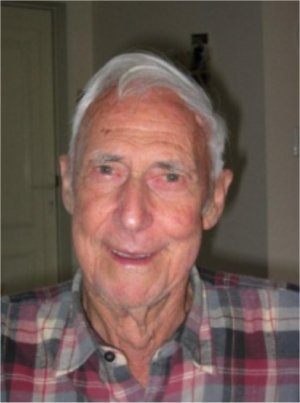
And our Arthur's eldest sister Lottie married Justin McCarthy in Auckland. They had a son born 1924 and called him Arthur Earl.......(McCarthy) ... so that is another close family association.
Arthur Earl Mc Carthy b 1924

Arthur Earl Collie's medals

Alan: 'These are Arthurs WW1 medals. The originals were sent to his mother, but they cannot be located, so these are copies that I purchased and mounted them... and like the 1913 photo, this plaque hangs in my study. In 1923 the WW1 Memorial Gate at Boys High School Dunedin was erected. Similar gates and monuments were erected in many places in New Zealand .... at schools, public gardens and in town centres to honour and remember the 1000's of young Kiwis that gave their lives during the Great War.'
Arthur's High School in Dunedin
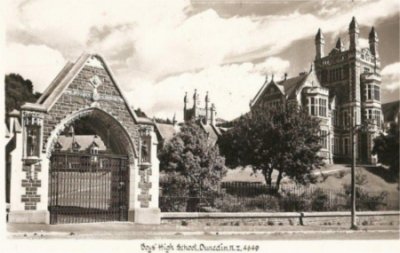
'This is the 1914/18 Memorial Gate at Arthurs High School in Dunedin. (Otago Boys High School). Inside the entrance are the names of the fallen Soldiers and of course Arthurs is there.'
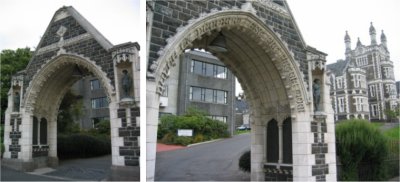
Here we see Arthurs name set in bronze.
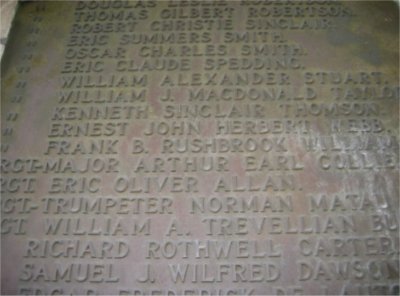 But life goes on…
But life goes on…
In 1927 Lucy Ann COLLIE, the mother of Arthur Earl, dies in Dunedin.
Lucy Ann Collie with her daughter Olive
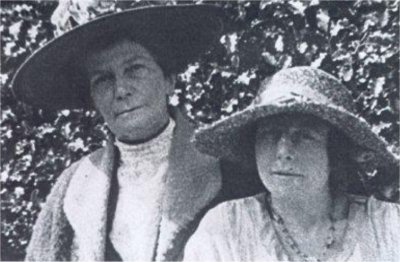
Arthur's father is still alive. He does two things: He makes a lasting memory for his wife and his son Arthur at Dunedin's Northern Cemetery. (Alan and other relations restored the grave)
Another memory of Arthur
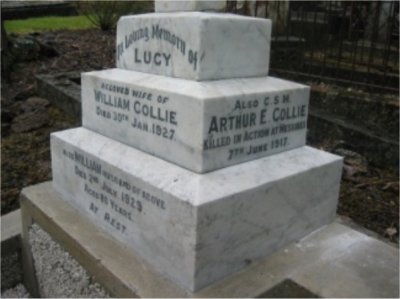
And in 1928 William sails back to Australia, with his daughter Olive, to see the Melbourne Cup run, visit friends, relations and Williams eldest daughter Lottie who lived in Melbourne.
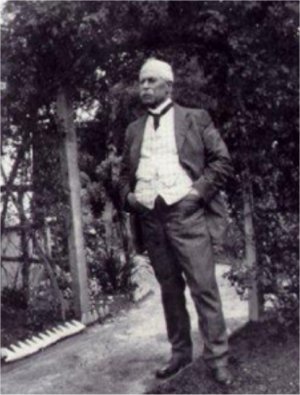
Back in New Zealand in 1929 William COLLIE dies in Dunedin, age 80 and is buried in Lucy's grave.
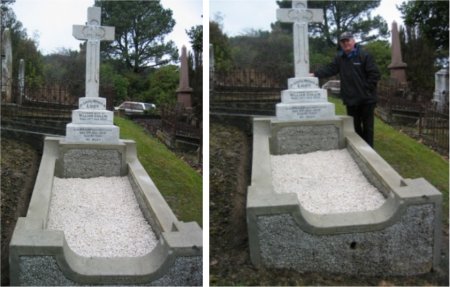 The family nowadays
The family nowadays
'There are many descendants of William Collie and his two wives Catherine Ryan and Lucy Clark. Most are in Dunedin NZ but many are scattered throughout New Zealand, Australia and many countries of the world. Unfortunately there are no descendants of our Arthur'
'Below are the two oldest direct descendants of William Collie, Olive and Gwen'
Dunedin Collies
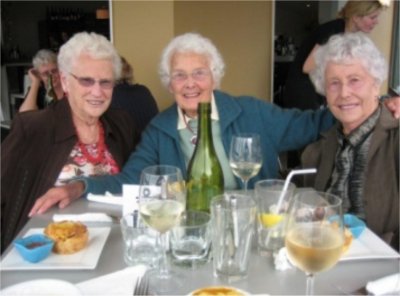
'Olive (80)(descendant of Arthur's sister Olive McLauchlan nee Collie) is on the right, my mother Rona Collie (nee Corke, she married Earl Collie - one of the twins) (90) is in the middle, and Gwen (82) ( who is the youngest daughter of William Ernest Collie, Arthur's brother) is on the left......they too like a wine!!!!.... Gwen who is now 81 did not really know why her father did not go to WW1... and she has no knowledge of him being a volunteer here in NZ or overseas..... William Ernest Collie was married to Beatrice Wharton in 1913, had their first daughter in 1913, the second in 1916, the third in 10/1917... so it is very likely that Willam Ernest Collie was not required or permitted to go to WW1 as he was married with 3 daughters' Alan
The family of Alan and Barbara
.jpg)
Anna Collie (lives in London) standing at rear.... Steve Collie (now in Dubai) at rear with his wife Kerry in the green.... Louise Kuegler (n Collie)(lives in Auckland) in the front with husband Scott, and of course Barbara and myself.
Barbara and myself are fortunate to now have four grandchildren....Will aged 2 ½, Mila 1 ½, and twins Jed and Toby ages 4 months.
Alan and Barbara came to visit the grave of his great-uncle at Messines in 2005..... and now he is back.
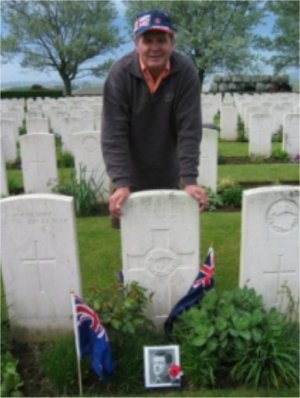
'Recently Arthur's Company Sergent Major's Parade Stick was located in Sydney Australia in the care of another relation..... this had been returned to Dunedin after his 1917 death and his parents had the engraving put onto it.... Its great to be able to bring it back to Messines.... perhaps more posessions of Arthur will come to hand in the years ahead.'
Arthur's Parade Stick.....
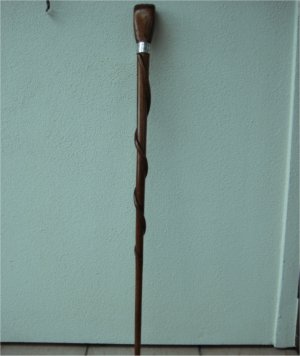
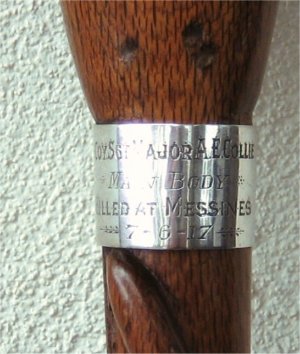 Published on greatwar.be - 10/06/2009
Published on greatwar.be - 10/06/2009